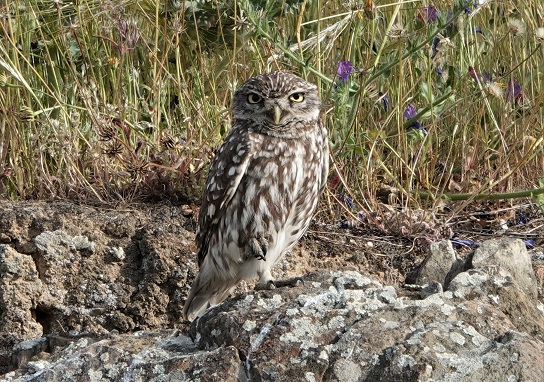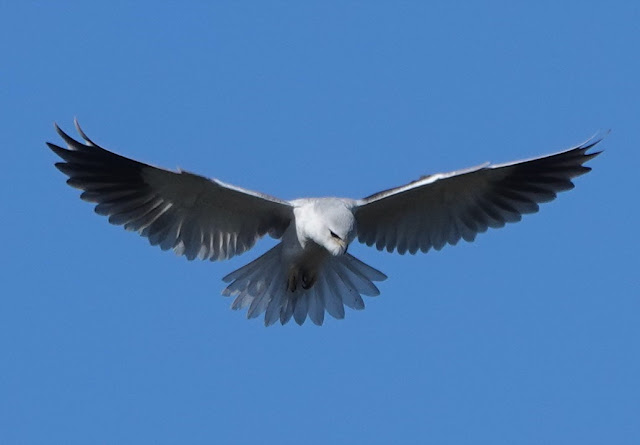 |
| Our olive grove (Martin Kelsey) |
I pause in my labours, as is the time-honoured privilege for those who work on the land, straighten my back, breathe deeply and let breeze-licked sunshine smoothe my face. Clouds gently cruise the sky and as I hear the fluid notes of Woodlark I shut my eyes in a brief meditation. Thus refreshed, I look back along the erratic lines of our olive trees. My relationship with our garden and orchard is complex, reminding me of someone breaking-in a bold and stubborn horse. There is a sense of attrition, a struggle of domination, and moments when I feel I have the upper hand. One is that point in early summer when, as a fire-prevention requirement, I have cut back and strimmed the dry vegetation around our plot's peripheries. The anarchy of long, yellowed-grey stems thwarted and borders once again defined. Another is triennial, following the pruning of the olive trees in February. For a couple of weeks each tree was encircled by the cut branches, with our neighbour's sheep enjoying nibbling off the leaves. Once stripped of foliage, I gathered all the branches together to burn, along with the prunings from other trees and shrubs, in one large pile. Fastidious to the point of obsessive I paced the rows of trees seeking out small twigs that the sheep had dispersed. They had left a neat short sward, and the ground clean, tidy and green. It was looking in great shape. Thus was my illusion, just days from the start of spring's surge, the heady, orgasmic chaos of growth and colour, when orchard turns from cropped pasture to meadow.
 |
| Olive tree bole landscape (Martin Kelsey) |
The olive trees have had large branches cut off to restrain their size, making the winter harvest manageable and prompt vigour. With their crowns now open, my focus is directed to their trunks. I sit and look at the bole of one tree in particular. It is a landscape, shaped as all landscapes are by forces through its history, natural and human. Its relief displays folds and clefts, ridges and valleys, scars and tears: living growth upwelling against elemental pressures. Its surface is forested by lichens and mosses and in niches spring small plants and grasses. This is a tree I know well, because in one of its several cavities, Hoopoes have nested every year. This noble, ancient tree carries its own biota, ecosystem. As I sit and explore the scenery of this tree, the only intrusion to my venture is the short and rapid drumming from a nearby Lesser Spotted Woodpecker. A vibrant signal of spring.
 |
| Hoopoe feeding young in our olive (John Hawkins) |
Our olive trees give us an annual crop which more than meets our requirements of olive oil each year, indeed there are always many olives left for the wintering Blackcaps and Song Thrushes. As February closes, so this food supply is depleted, the birds now searching the ground for the few remaining fallen fruit, visible thanks to the sheep's grazing. These visitors will soon be returning to breeding grounds in central Europe.
I do not know when these olive trees were planted or the name of the person who created this orchard, whose legacy is gives us material benefits and a deeper transcendental fix to the past, a focus to the detail of the very architecture of the tree and a biome for life around us. Whoever that person was, I am profoundly grateful.






Comments